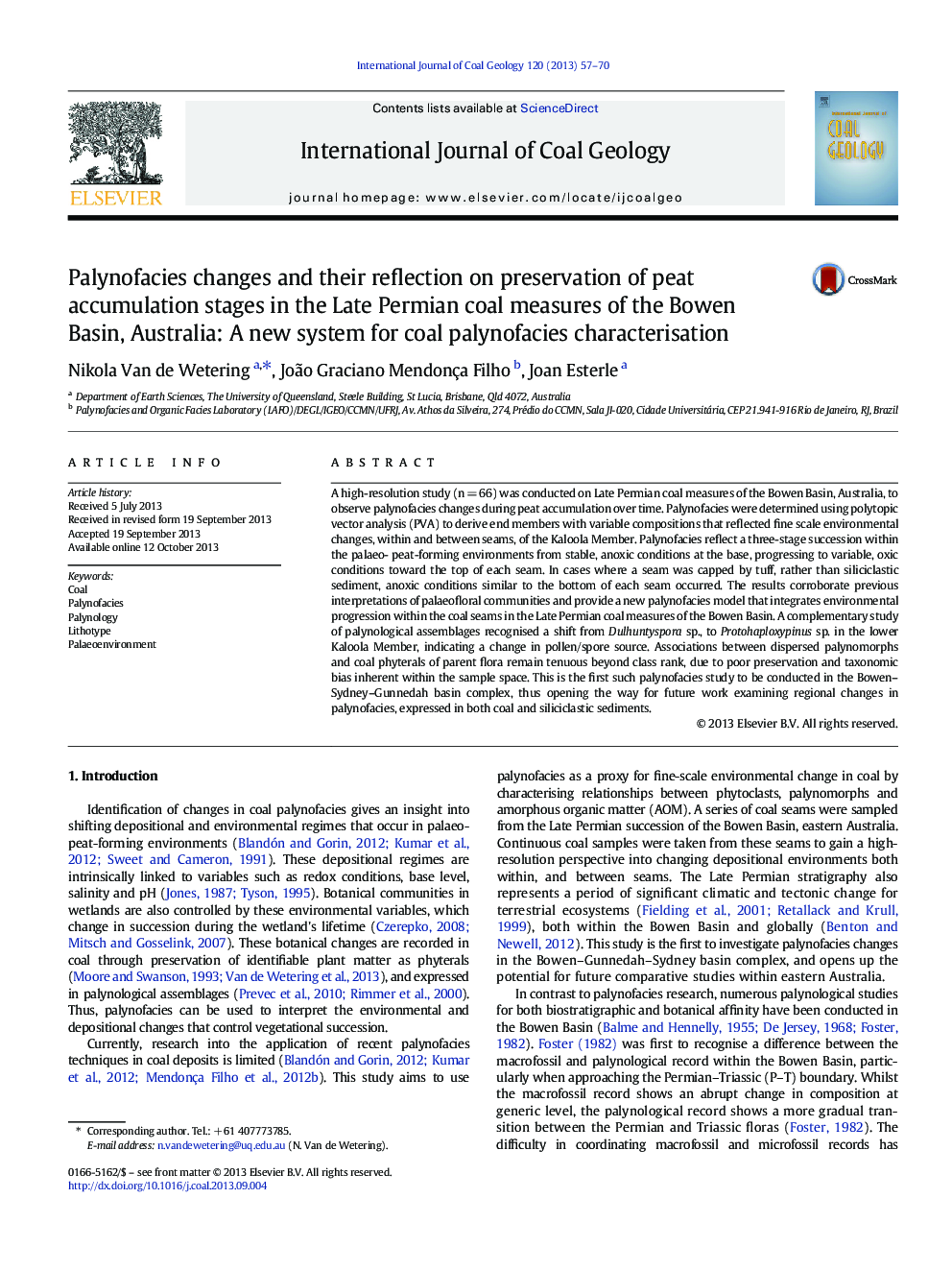| Article ID | Journal | Published Year | Pages | File Type |
|---|---|---|---|---|
| 8124046 | International Journal of Coal Geology | 2013 | 14 Pages |
Abstract
A high-resolution study (n = 66) was conducted on Late Permian coal measures of the Bowen Basin, Australia, to observe palynofacies changes during peat accumulation over time. Palynofacies were determined using polytopic vector analysis (PVA) to derive end members with variable compositions that reflected fine scale environmental changes, within and between seams, of the Kaloola Member. Palynofacies reflect a three-stage succession within the palaeo- peat-forming environments from stable, anoxic conditions at the base, progressing to variable, oxic conditions toward the top of each seam. In cases where a seam was capped by tuff, rather than siliciclastic sediment, anoxic conditions similar to the bottom of each seam occurred. The results corroborate previous interpretations of palaeofloral communities and provide a new palynofacies model that integrates environmental progression within the coal seams in the Late Permian coal measures of the Bowen Basin. A complementary study of palynological assemblages recognised a shift from Dulhuntyspora sp., to Protohaploxypinus sp. in the lower Kaloola Member, indicating a change in pollen/spore source. Associations between dispersed palynomorphs and coal phyterals of parent flora remain tenuous beyond class rank, due to poor preservation and taxonomic bias inherent within the sample space. This is the first such palynofacies study to be conducted in the Bowen-Sydney-Gunnedah basin complex, thus opening the way for future work examining regional changes in palynofacies, expressed in both coal and siliciclastic sediments.
Related Topics
Physical Sciences and Engineering
Earth and Planetary Sciences
Economic Geology
Authors
Nikola Van de Wetering, João Graciano Mendonça Filho, Joan Esterle,
